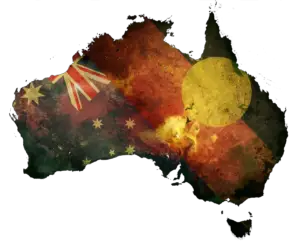Australian Sign Language (Auslan) serves as a cornerstone of communication and community for the deaf and hard-of-hearing population in Australia. As a visually expressive language, Auslan is pivotal in fostering inclusivity and connecting individuals within the diverse Australian deaf community.
Usage and Community
Approximately 20,000 to 30,000 people in Australia use Auslan as their primary means of communication. This community includes individuals who are deaf, hard of hearing, and their families, friends, and educators who engage with Auslan to facilitate communication. Auslan plays a crucial role in providing access to education, employment, and social interactions, contributing significantly to the empowerment of the deaf community.
Government’s View
Auslan has garnered recognition and support from the Australian government. In 1987, Auslan was officially recognized as a community language other than English. This acknowledgment marked a pivotal moment, solidifying the importance of Auslan in Australian society and advocating for its use in various settings, including education, public services, and cultural events.
Cultural Significance
Beyond being a communication tool, Auslan embodies the cultural identity and heritage of the Australian deaf community. Deaf cultural events often feature storytelling, poetry, performances, and artistic expressions in Auslan. These events not only celebrate the linguistic richness of Auslan but also provide a platform for both the deaf and hearing communities to appreciate and engage with its nuances.
History and Evolution
The origins of Auslan can be traced back to the early 19th century when deaf communities in Australia began developing their unique forms of sign language. Over time, these regional variations coalesced into what is recognized today as Auslan. Its evolution reflects the cultural diversity and influences within the Australian deaf community.
Community Events and Learning Opportunities
Auslan is celebrated and learned through numerous community events across Australia. From deaf cultural festivals to workshops and storytelling sessions, these events offer opportunities for individuals, both deaf and hearing, to immerse themselves in the language and culture of Auslan. Additionally, there are multiple courses available, both in-person and online, catering to those interested in learning Auslan, ensuring accessibility and inclusivity in learning.
Interesting Facts
- Auslan incorporates signs derived from British Sign Language (BSL) due to historical ties between Australia and the UK.
- The Australian Sign Language Interpreters Association (ASLIA) plays a significant role in promoting the use of Auslan and advocating for the rights of deaf individuals.
- Auslan is a dynamic language that evolves with time, incorporating new signs for technological advancements and societal changes.
Future Outlook
As Australia continues to progress, there’s a positive outlook for Auslan. Increased awareness, educational initiatives, technological advancements, and support from the government contribute to the language’s growth and recognition. Auslan’s integration into various aspects of society promises a more inclusive and equitable future for the deaf community in Australia.
In conclusion, Auslan stands as a symbol of Australia’s commitment to inclusivity, cultural diversity, and linguistic recognition. Its vibrant community events and various learning opportunities reflect the nation’s dedication to fostering understanding and connection among all its citizens, regardless of hearing ability.




One thought on “What is the Sign Language of Australia? Auslan!”